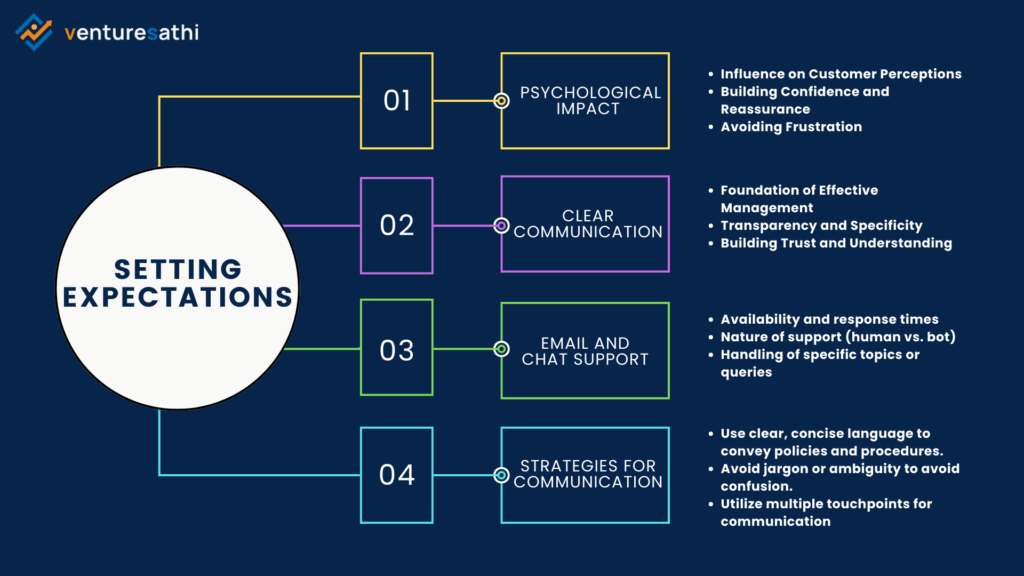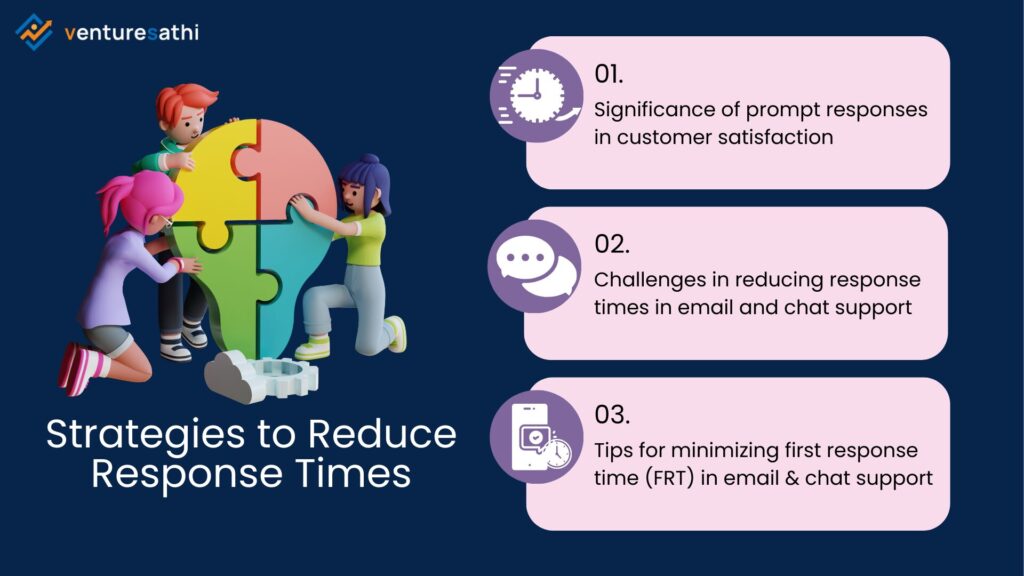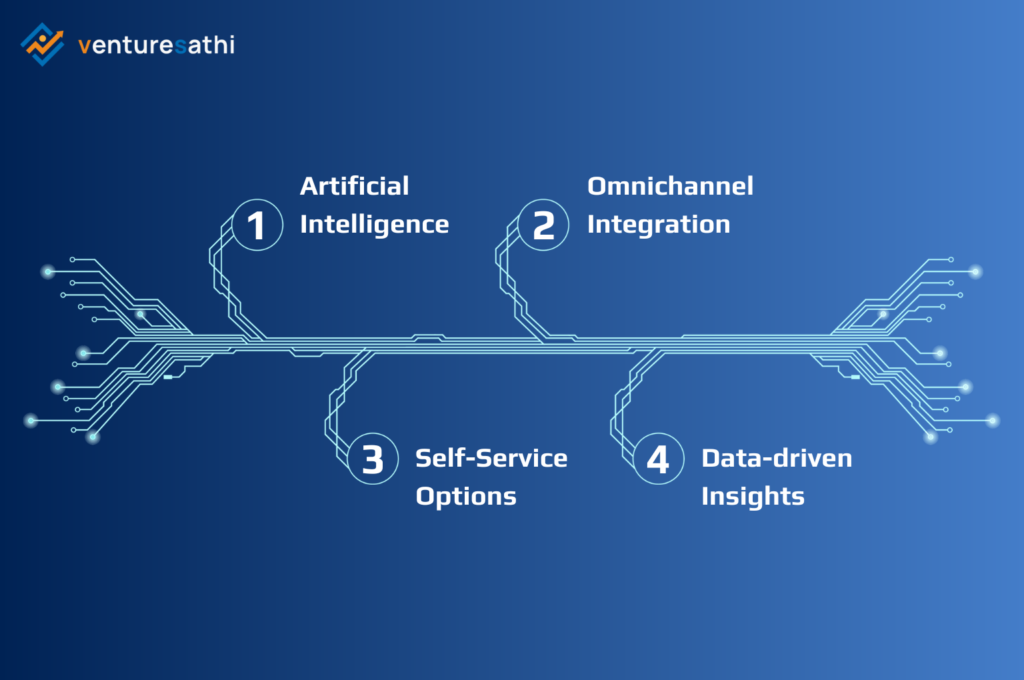Introduction
In the competitive landscape of e-commerce, customer experience stands as the ultimate priority. It’s the decisive factor that distinguishes one business from another. Picture this: You’re shopping online, contemplating a purchase, and suddenly encountering an issue. Who do you turn to? Email and chat support – the unsung heroes of customer service. Their role is paramount in ensuring customer satisfaction and loyalty. Research shows that 86% of buyers are willing to pay more for a great customer experience, highlighting its importance. In this blog, we’ll explore the significance of email and chat support in e-commerce, uncovering strategies for delivering exceptional service.
Experience the difference with Venturesathi’s tailored contact center solutions – unlock unparalleled efficiency and customer satisfaction now!
Setting Expectations for Customer Support


A. The psychological impact of setting expectations:
Setting expectations is not just a mere formality; it’s a psychological tool that can significantly influence customer perceptions and satisfaction. Think of it as laying the groundwork for a positive interaction – when customers know what to expect, they feel more confident and reassured about the support they’ll receive. On the other hand, ambiguity or unmet expectations can lead to frustration and disappointment, tarnishing the overall customer experience.
B. Importance of clear communication in managing customer expectations:
Clear communication is the cornerstone of managing customer expectations effectively. It’s not enough to simply promise stellar support; you need to articulate precisely what customers can expect in terms of availability, response times, and the nature of support. By being transparent and upfront about these aspects, you set the stage for a mutually beneficial relationship built on trust and understanding.
C. Key expectations to set for email and chat support:
1. Availability and response times:
Inform customers about email and chat support availability, whether it’s 24/7 or specific hours. Set clear response time expectations, whether within hours or minutes, for prompt assistance.
2. Nature of support (human vs. bot):
Differentiate between human and bot assistance. State whether customers will interact with a real person or an AI-powered bot. While bots offer efficiency and scalability, human support provides empathy and understanding.
3. Handling of specific topics or queries:
Outline the types of topics or queries email and chat support teams handle. Ensure customers know which concerns will be addressed promptly and effectively.
D. Strategies for effectively communicating expectations to customers:
Now that we understand the importance of setting expectations let’s explore some strategies for effectively communicating them to customers:
- Use clear, concise language to convey policies and procedures.
- Avoid jargon or ambiguity to avoid confusion.
- Utilize multiple touchpoints for communication: automated email responses, chat greetings, and FAQ sections.
- Offering examples or scenarios to illustrate expectations.
- Offer proactive updates to customers to enhance the customer experience.
Don’t let customer queries linger – provide responsive support that keeps your e-commerce operations running smoothly. Learn more about the importance of responsive customer support in our latest article.
Strategies to Reduce Response Times


A. Significance of prompt responses in customer satisfaction:
Prompt responses are essential for customer satisfaction. Waiting for support can lead to frustration and dissatisfaction. Research shows that quick resolutions to issues result in higher satisfaction and loyalty. Businesses should prioritize prompt responses to demonstrate their commitment to customer care and stand out from competitors.
B. Challenges in reducing response times in email and chat support:
Achieving fast response times in email and chat support can be challenging due to several factors:
1. Volume of inquiries: High volumes of emails or chat messages can overwhelm support teams, making it challenging to respond promptly to each query.
2. Skill and resource limitations: Not all support agents may have the necessary skills or resources to handle inquiries efficiently, resulting in delays in response times.
3. Technology constraints: Outdated or inefficient support systems can hinder response times, especially in managing multiple channels simultaneously.
C. Tips for minimizing first response time (FRT) in email and chat support:
To reduce response times effectively, consider the following strategies:
1. Centralizing support channels:
Consolidate emails, chats, and inquiries into one platform for streamlined management. This approach ensures that support agents can respond efficiently without overlooking messages.
2. Implementing real-time notifications:
Utilize real-time alerts to notify support agents of new inquiries instantly. Desktop alerts, mobile push notifications, or email alerts can help prioritize urgent requests and minimize delays in response times.
3. Training support agents for efficiency and effectiveness:
Allocate resources towards comprehensive training programs to ensure support agents are equipped with the requisite skills and knowledge. Provide training in communication techniques, product knowledge, and time management to handle inquiries swiftly. Standardized processes and workflows can further streamline support operations and reduce response times.
Transform your customer interactions into meaningful experiences with personalized appointment scheduling. Explore our article on personalized customer engagement and revolutionize your approach today.
Soliciting Feedback for Continuous Improvement
We all know that customer feedback is super important for us to make our support services even better. It gives us a peek into your experiences, what you like, and what you don’t, helping us tweak things to suit you better. But let’s be honest, getting feedback through emails and chats can be a bit tricky sometimes.
Sometimes, not many people respond, or the feedback we get might not show the full picture. Plus, some of you might feel tired of constantly being asked for feedback.
To overcome these hurdles, businesses can integrate feedback mechanisms directly into email and chat platforms, encourage feedback participation through incentives, and analyze feedback data meticulously. This process involves identifying trends, prioritizing areas for improvement, and implementing changes to enhance the support experience.
By proactively addressing customer feedback, businesses demonstrate their dedication to continuous improvement and customer-centricity, thereby elevating the overall support experience.
Because at the end of the day, our goal is to make sure customers are happy with our support. So, keep the feedback coming, and together, let’s make our support experience the best it can be!
Elevate your brand’s reputation and foster long-term relationships with customers through effective help desk support. Dive into our article on building brand loyalty to learn more.
End Note
As we conclude our discussion on enhancing customer experience through email and chat support, it’s vital to highlight their significant impact on shaping customer perceptions and driving business success. These channels aren’t just convenient; they’re powerful tools for delivering exceptional experiences. By setting expectations, reducing response times, and seeking feedback, businesses can provide personalized assistance effectively.
Now is the time for businesses to invest in these channels and exceed expectations, driving loyalty and long-term success. So, are you ready to elevate your customer support and create memorable experiences? The opportunity awaits.
Explore Venturesathi’s contact center services and discover a new standard of support excellence. Contact us today!



